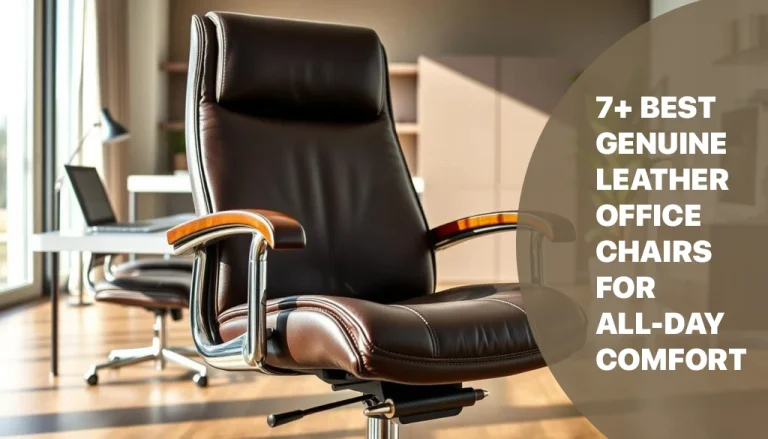When it comes to promoting comfort in the workplace, the office seat is an essential piece of furniture that plays a crucial role. But how does an office chair work? This article helps you take a closer look at the inner workings of an office seat. Let’s explore the various mechanisms and features that contribute to its functionality.
How Does An Office Chair Work
Pneumatic cylinders, or gas cylinders, use pressurised gas to force its way through a chamber and move a piston to the desired spot. The office chairs’ seats can rise or fall thanks to this motion and force. These functions are of its key components: the base, the seat, the backrest, the armrests, and height adjustment.
The base
At the foundation of every office chair lies the base, which is responsible for stability and mobility. The base consists of a sturdy frame and a set of smooth-rolling casters. These casters allow you to move effortlessly around your workspace without straining your body or causing unnecessary interruptions.
The seat
The height adjustment feature allows you to customize the seat’s height according to your body proportions and desk height. You ought to look for chairs with pneumatic height adjustment, allowing for smooth and effortless changes.
The backrest

To understand how an office chair works, consider the backrest aspect. Some seats even feature built-in lumbar support, providing targeted support to the natural curve of your lower back. This feature helps reduce the risk of lower back pain. It promotes a more comfortable sitting experience.
The armrests
The armrest can be raised, lowered, or even adjusted in width. This customization allows you to find the most comfortable position for your arms and shoulders. It eliminates discomfort and fatigue. You can purchase loop or T-Arm designs as well as 360 rotation.
Height adjustment
Lumbar support focuses on maintaining the natural curve of your lower back. It helps users to ease lower back pain. Some seats have built-in lumbar cushions or adjustable lumbar pads that can be positioned at different heights to align with your lower back.
Swivel pole and wheels

The swivel pole serves as the anchor point. It allows the seats to rotate 360 degrees. This feature enables you to effortlessly reach different workspace areas without straining your body. The wheels attached to the seat’s base facilitate smooth movement across various surfaces. Opt for chairs with high-quality wheels that provide stability and fluid motion.
Read more: How Much Do Office Chairs Cost
Adjusting An Office Chair For Optimal Comfort?
Following these step-by-step guidelines, you can customize your chair to fit your body and create an optimal sitting experience.
Step 1: Adjust the seat height
Sit in the chair with your back against the backrest. You should use the height adjustment lever or button to raise or lower the seat until your thighs are parallel to the floor. Your knees should be at a 90-degree angle, and your feet should be comfortably positioned.
Step 2: Position the armrests
Check if your chair has armrests that can be raised, lowered, or adjusted in width. You should modify the armrests to a height that allows your shoulders to relax and your arms to rest comfortably.
Step 3: Fine-tune the backrest recline
Do not adjust the backrest recline angle according to your preference. Some seats have a lever or tension knob to control the recline. You should avoid excessive recline angles that strain your neck or prevent easy access to your workspace.
Step 4: Check the seat pan depth
It ensures a two-finger gap between the edge of the seat and the back of your knees.
Step 5: Utilize swivel and casters
Rotate the chair using the swivel function to reach different workspace areas without strain. If needed, choose casters suitable for the specific flooring surface.
Read more: How Are Office Chairs Made
Conclusion
How does an office chair work? This article has helped you answer the above question. Investing in a high-quality seat is very significant. So, the next time you settle into your office seat, take a moment to appreciate the functionality behind its design.
Following the below video to have more information:
FAQ





